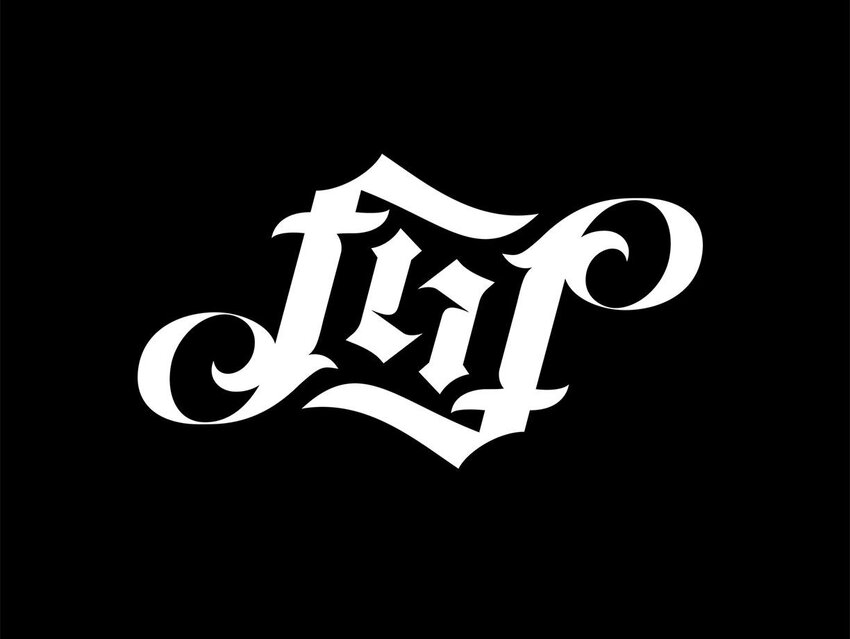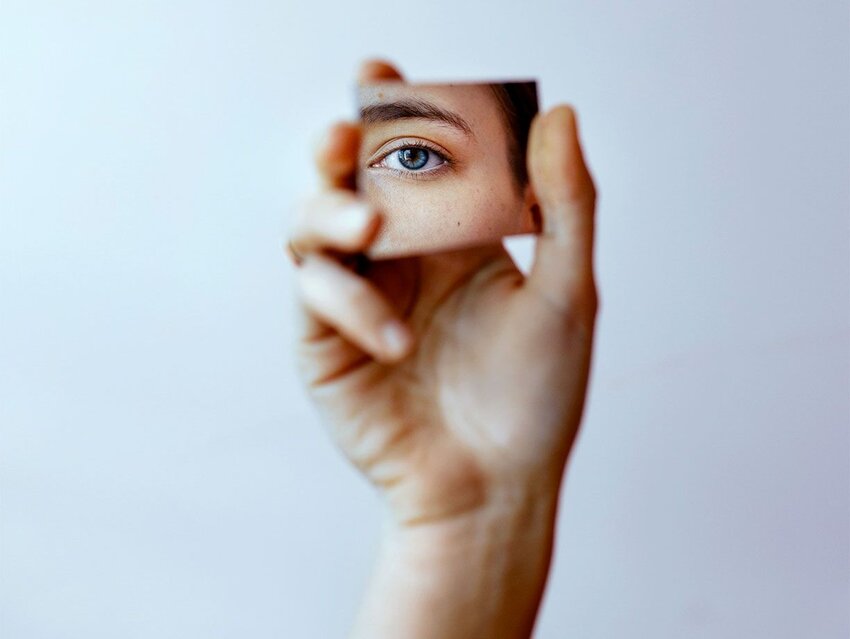An ambigram is a relatively new calligraphic tool, first coined by cognitive scientist Douglas Hofstadter in the 1980s. It is a word or phrase that is intended to be read in either of two ways (by flipping it or rotating it) and can have the same or a different meaning depending on the type of ambigram. The word stems from “ambi” meaning “on both sides” and “gram” which refers to a drawing, picture, or writing of some sort. Ambigrams can be recognized in everyday life or used intentionally for creative reasons, such as in advertising or for a tattoo.

Natural Ambigrams
Think of the word “pod.” It’s a natural ambigram — a word that is the same when it is rotated. Natural ambigrams change, depending on the alphabet and language. In English, words such as “suns,” “yeah,” “dollop,” and “swims” fit the description. If they were rotated 180 degrees (flipped upside-down), they would still look and read the same (often enhanced by the typography or handwriting). Similarly, “bud” and “mom” form natural mirror ambigrams, meaning that when reflected on a vertical axis, they remain the same.
Natural ambigrams typically come from common words and are more of a novelty, rather than serving a purpose. Other forms of ambigrams, those with more deliberate intent, are creatively manipulated by calligraphers and artists for creative expression.
Ambigrams in Graphic Design
Ambigrams are used in graphic design often to create a logo or make a new slogan pop. Typically, these are not natural ambigrams, but a sort of “forced” ambigram that works only because of a specific font or style, making the ambigram a kind of optical illusion so that the word still reads the same when it is rotated or flipped. Rock star Paul McCartney uses an ambigram on the album, “Chaos and Creation in the Backyard” to make his first and last name appear the same way from both directions.
John Langdon, a typography professor and artist, has become an authority on the ambigram. He designed elements for the Dan Brown mystery-thriller “Angels and Demons,” including the famous “Illuminati” ambigram illustration that features heavily in the novel. See more visual examples at John Langdon’s website.
Asymmetrical Ambigrams
A “symbiotogram” is an asymmetrical ambigram illustration that depicts two words whose meanings are usually different (for added interest), and either word can be read depending on which way it is flipped. Imagine the words “true” and “false.” With some creative calligraphy, the ambigram reads as “true” when written one way, and “false” when it is flipped.
Take the design one step further with an oscillation ambigram. These special ambigrams contain two different words that can be read from the same direction. To create one, it helps if the words are somewhat similar, like “family” and “friends” (a popular choice). Font, color, size, shading, and other design elements are especially helpful when creating oscillation ambigrams.
Welcome to the complicated world of ambigrams. They can be a marketer’s best friend, or a tattoo artist’s worst nightmare, but they’re always fascinating works of art.
Featured image credit: Lisa Vlasenko/ iStock

